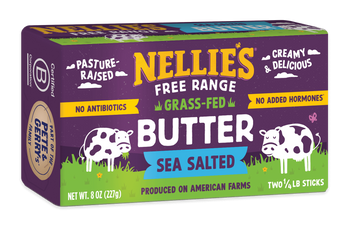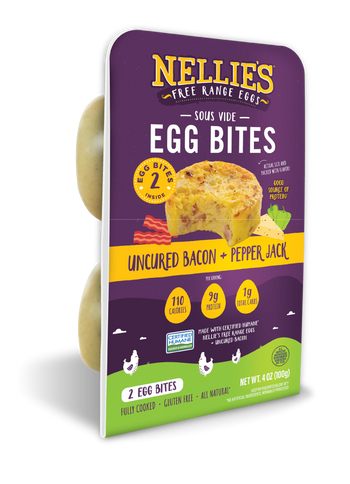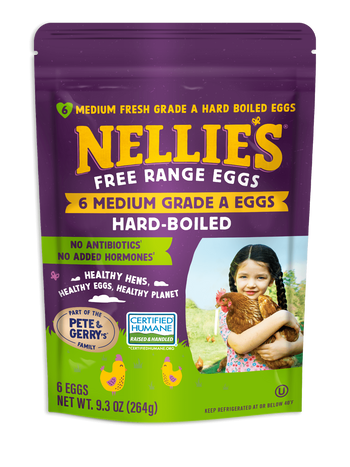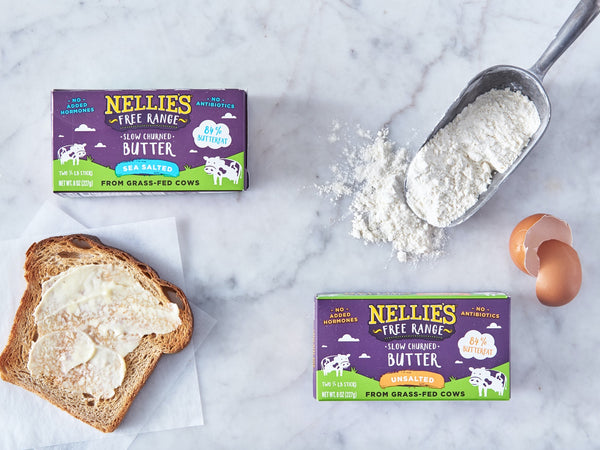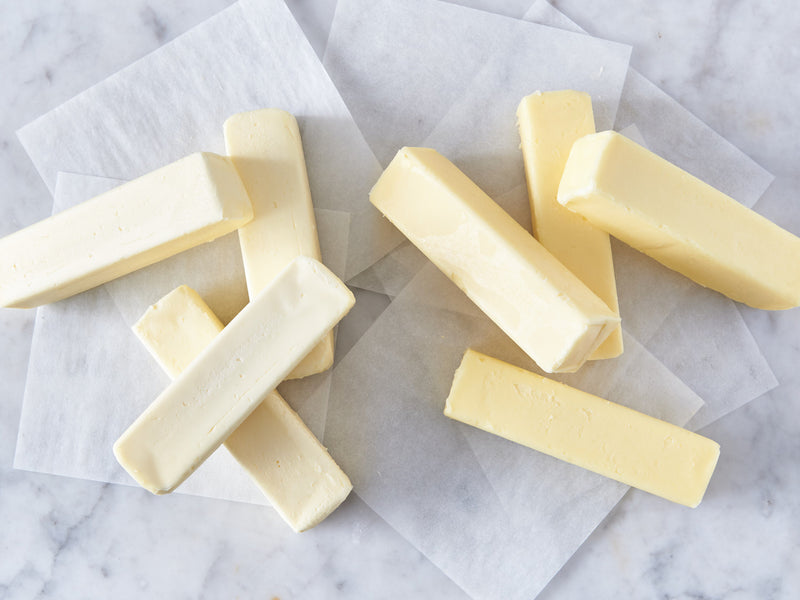
The last time you strolled down the dairy aisle or stopped to consider your options at the meat counter, you probably saw the term "grass-fed" here and there. If you've ever wondered what grass-fed means and why butter sometimes boasts the label, read on for all the answers to your questions.
What does grass-fed mean?
For meats and dairy products, the term "grass-fed" can mean any number of things. It might indicate, for example, that the animal's diet was made up of 100% fresh green grass, but it could also mean that the animal's diet consisted mostly of grains and a minimal amount of dried grasses. And of course, there are many possibilities in between. While grass-fed is not an industry regulated term for most dairy products, when done right, it means providing animals like dairy cows with access to fresh grass and pastures.
What is grass-fed butter?
At Nellie's, the term grass-fed is all about giving our dairy cows a happy life. Since there is no universal grass-fed standard in the dairy industry, it's up to individual producers to set and maintain their own standards for grass-fed with transparency and integrity. Luckily, these values have always been ingrained in what we do here at Nellie's. For our butter, the term grass-fed means that grass makes up the majority of our cows' diet. And in the butter industry, this is a high bar! On dairy farms all over the country (and even across the globe), a 100% grass-fed diet isn't feasible due to climate, which means that a portion of most dairy cows' diets comes from grains. For the cows on our partner farms, it's about 25%. Our partner farmers work closely with nutritionists to ensure that the cows are getting all of the nutrients they need to stay healthy and produce high quality milk all year long, and these nutrients typically come from a combination of barley, corn, and alfalfa grown by the farmers and fermented into silage. The grain portion of their diet can also be supplemented with soybean and other high quality protein sources as needed throughout the year. Similar to our Certified Humane Free Range egg farms, our dairy farms are independently audited regularly to ensure that the cows are given ample access to green, grassy pastures.
Is grass-fed butter better than regular butter?
There has always been some hearty debate about whether grass-fed butter is better than butter from cows without access to grass. If you've tried our butter (or our eggs!), you've experienced firsthand how much of a difference giving animals access to a varied diet and outdoor forage makes in the long run. From the color and texture to the flavor and nutrition of a stick of butter, the cow's diet affects just about every single quality of the final product. That's why here at Nellie's, we can confidently say that grass-fed butter is a better option for the cows, for our farmers, and for you.
Grass-fed butter color
In the same way that a hen's diet affects the color of her yolks, a cow's diet affects the color of her milk and cream, and therefore the color of the butter made from it. Butter's pale yellow hue comes from beta-carotene, which is naturally found in grasses. In general, butter that is rich in color is an indication of a healthy, happy, grass-fed cow that has spent much of her time under the sun, grazing in green pastures. Some companies use natural dyes to achieve a yellow color despite not grass-feeding their cows, and while this may result in a beautiful looking butter, the final product unfortunately does not come with all the benefits of naturally yellow butter.
Grass-fed butter texture
Believe it or not, a cow's diet has a big impact on the texture of butter. The more fresh grass a cow eats, the softer and more spradable her butter will be at room temperature. The more hay and grain a cow eats, the harder her butter will be. This helps explain why most butters tend to be a bit firmer during the winter season: most climates don't allow cows the same access to green grass in the cold months as in warmer months, so even partner farms like ours must rely heavily on grains and hay during the winter.
Grass-fed butter flavor
The complexity of flavor in a stick of butter ultimately depends on the cow's diet. In general, a diet that includes lots of fresh grass yields a more flavorful butter. Some people find that grass-fed butter has a slightly nutty taste, and even a hint of tanginess. A higher butterfat content (ours is 84%, which is considered European-style) makes those complex flavors even more pronounced.
Health benefits of grass-fed butter
It's clear that a grass-fed diet has a big impact on the quality of butter, but you might still be wondering: does a grass-fed diet impact nutritional content? Is grass-fed butter healthier than regular butter? While it's not inherently "healthier" than regular butter, there are some undeniable benefits of the increased nutrient content found in grass-fed butter. Here are a few of the many nutritional benefits of grass-fed butter that stem from a healthier, happier lifestyle for grass-fed cows:
- Increased omega-3 fatty acids
- Significantly increased levels of ALA and long-chain omega-3s EPA and DPA
- More better-for-you unsaturated fat, less saturated fat
- More vitamins and minerals, including vitamins A and E, riboflavin, niacin, calcium, and phosphorous

